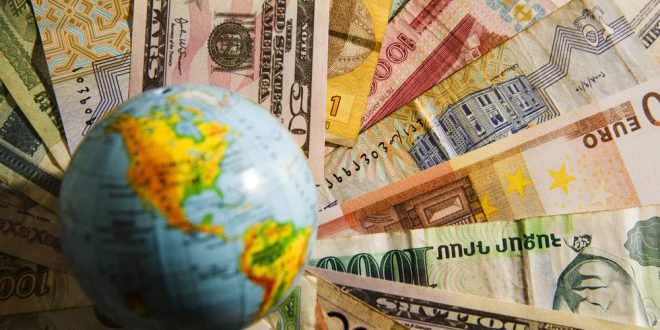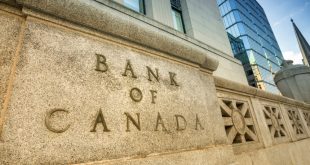Last week was ideally key central banks’ week, it is poised to be followed by a relatively quiet week ahead. It was practically a big week for US stocks.
US Stocks
The Fed’s indication that it may lower interest rates three times in 2024 caused the stock market to surge higher in a strong, widespread gain. While the S&P 500, Nasdaq composite, S&P MidCap 400, and small-cap Russell 2023 all established records for 2023, the Dow Jones reached a new high.
Treasury yields fell sharply. Big-cap techs were slightly impacted by the disappointing Adobe (ADBE) and Oracle (ORCL) sales projections. With promising trial findings for its analgesic, Vertex Pharmaceuticals (VRTX) saw a sharp increase in value.
US Dollar
In the United States, the Federal Reserve issued its decision on interest rates, as well as its British and European counterparts, in addition to the US inflation rate data and other important data. At the end of this busy week, the dollar index revealed a degree of resilience despite the worst weekly performance in one month, as it hovered around the 102.60 mark. The dollar rose thanks to the Services Purchasing Managers’ Index data, issued by Standard & Poor’s Global.
Observers believe that cautious bets on the Fed may limit the dollar’s upward movement. The dollar, measured by the DXY index, is trading at 102.60, recording daily gains but representing its worst weekly performance in more than a month.
Data Drove USD
on the economic data front, the US Bureau of Labor Statistics report revealed on Tuesday that the inflation rate in the United States, as measured by the Consumer Price Index (CPI), fell to 3.1% on an annual basis in November.
Data released by the US Bureau of Labor Statistics on Wednesday also showed that the Producer Price Index (PPI) in the United States rose 0.9% year-on-year in November, compared to 1.2% in October. This reading was lower than the market expectation of 1%.
The annual core producer price index rose 2% in the same period, lower than the October reading and analyst estimates of 2.4% and 2.2%, respectively. On a monthly basis, the core producer price index remained flat for the second month in a row.
Oil’s Performance
Crude oil markets trended lower at the end of the current trading week. US crude, was testing at the lower end, giving up $72. US crude oil has seen a notable rebound from the mid-week low of $68 per barrel and WTI crude oil bids are turning bearish during Friday trading, testing the red zone with an afternoon decline to $70.65 before recovering to just under $72.00.
It is worth mentioning that on Friday, during the north American session, the price of WTI oil, at one point, fell as low as $70.65 in the afternoon and then slightly increased to $72.00. This week, WTI might revert to the opening bids because of intricate technical issues and a danger prompted by the Fed’s dovishness. Global oil demand is declining more swiftly than OPEC’s ability to control production.
Glimpse On Key Central Banks – Fed
The Federal Reserve kept the interest rate at the same levels it has adopted since last July, without change. The interest rate continues to work in the 5.25%-5.50% range, a decision which came in line with market expectations.
Thus, the Federal Reserve has stabilized monetary conditions in the United States for the third meeting in a row, which led to the emergence of speculation that the central bank may have reached the end of the current cycle of quantitative tightening aimed at reducing inflation. The decision raised speculation that the Fed may be preparing to cut rates several times in 2024.
FOMC members also expected that the Fed would reduce interest rates at least three times in 2024. Although this was higher than market expectations that had previously indicated the possibility of raising rates four times, it was higher than expectations indicated earlier by monetary policy makers.
Accordingly, the US dollar concluded Wednesday’s trading in a bearish direction, affected by the decision to keep the federal interest rate unchanged and the expectations of members of the Federal Open Market Committee that the Fed will begin cutting interest rates next year.
Fed Chair Jerome Powell’s said that “the future path is dominated by uncertainty,” stressing that the full impact of quantitative tightening still has some time to appear. Powell added, “Economic activity has slowed significantly.” “Given where we are so far, and given the great uncertainty surrounding everything, we will proceed with caution.”
He continued: “Inflation has declined significantly amid a significant rise in the unemployment rate. The demand for labor is still higher than its supply, but the gap between them has decreased significantly. It also appears that wage growth has begun to decline as well.”
Bank of England
The Bank of England voted 6-3 to keep its key interest rate at a 15-year high of 5.25% for the third time in a row during its December meeting, as part of policymakers’ efforts to tackle inflation, even as there are signs that the economic situation is deteriorating.
However, investors are currently anticipating a drop in UK interest rates to around 4.0% by December 2024, following the unexpected contraction in October’s GDP and the faster-than-expected slowdown in UK wage growth rates revealed by recent economic data.
Sterling ended last Thursday’s trading with a sharp rise despite the Bank of England’s interest rate stabilization. The British interest rate statement indicates that monetary policy makers at the central bank may take the decision to further raise interest rates if necessary.
Andrew Bailey, Governor of the Bank of England, also refused to acknowledge the victory over inflation in the recent declining figure reflected in the latest batch of British data. The Governor of the Bank of England said: “There is still some distance to go” in the United Kingdom in terms of efforts to reduce inflation.
China
Chinese stocks fell on Monday, December 11, after data showed continued deflationary pressures as the country’s economy suffers from weak domestic demand. In contrast, Japanese stocks jumped amid increasing bets that its central bank may not raise interest rates next week.
Inflation figures for November in China showed a faster-than-expected decline in consumer prices, and the CPI fell 0.5% year-on-year, which is more than the 0.1% decline expected by economists polled by Reuters, and this comes as the fastest decline since November 2020.
ECB
The European Central Bank kept interest rates at multi-year highs for a second meeting in a row and signaled an imminent end to its latest bond-buying programme, as part of its efforts to combat high inflation.
The interest rate on principal refinances remained at a 22-year high of 4.5%, while the interest rate on deposit facilities remained steady at a record level of 4%.
The ECB also announced that the full reinvestment in PEPP will end on June 30, and the portfolio will then shrink by €7.5 billion per month until the end of 2024. Policymakers have pledged to keep interest rates at sufficiently restrictive levels for as long as necessary to bring inflation back to target.
The euro concluded the week’s trading in an upward direction after the European Central Bank’s decision to keep the interest rate unchanged, with the interest rate statement issued by the central bank including explicit statements indicating the exclusion of reducing interest soon.
Christine Lagarde confirmed, in the press conference she held following the announcement of the decision to stabilize interest rates, that the European Central Board of Governors did not discuss reducing interest rates at the last meeting this year.
Lagarde also stressed the need for the Central Bank to be vigilant and “remain attentive” at all times and to closely monitor the batches of data issued in the coming period to determine whether the current decline in inflation is “sustainable” or is due to transitional factors.
Key Development – German Budget
The German government has reached an agreement on the 2024 budget and will maintain current debt restrictions until next year after weeks of tense negotiations, the leading coalition partners announced on Wednesday.
The government is expected to save 17 billion euros (18.33 billion US dollars) in its core budget, Chancellor Olaf Scholz said at a press conference on Wednesday. Germany will also reduce spending from its Climate and Transition Fund, which has been the focus of the negotiations.
Schulz added that the government is sticking to its goals, including supporting Ukraine, and will maintain the debt ceiling, which was first approved in 2009.
The debt ceiling places a ceiling on the amount of government debt and limits the structural deficit of the national budget. It can only be suspended in emergency situations, such as the COVID-19 pandemic.
What To Watch In The New Week
In the US, the November Personal Income and Expenditure report, which notably includes the closely watched Personal Consumer Expenditure (PCE) Price Index, will take center stage, along with the final reading of third-quarter GDP growth, the Consumer Confidence Index, and Goods Orders. Perennial.
The UK will release reports on inflation and retail sales, while the focus in Japan will be on the Bank of Japan’s decision on interest rates, inflation rates, and foreign trade data.
In Germany, eyes will be on the Ifo business sentiment index, the GfK Consumer Confidence Index, and producer price inflation figures.
 Noor Trends News, Technical Analysis, Educational Tools and Recommendations
Noor Trends News, Technical Analysis, Educational Tools and Recommendations





